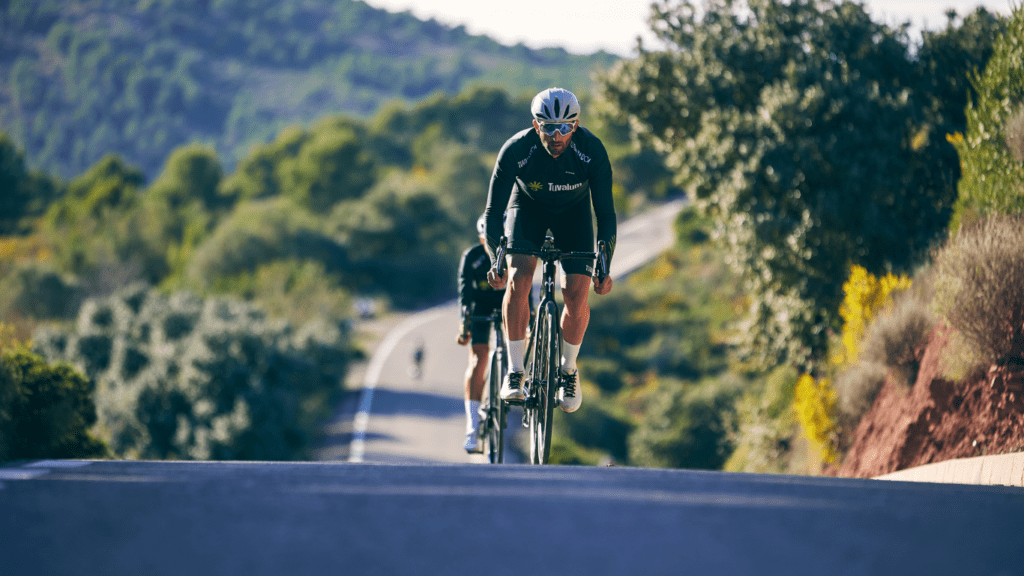Understanding Bicycle Gears
Mastering bicycle gears is crucial for optimal performance. Let’s dive into the types of gears and their impact on cycling.
Types of Gears in Bicycles
Bicycles use various gearing systems.
Common types include:
- Derailleur Gears: Found on most road and mountain bikes, these gears use a derailleur mechanism to shift the chain between different cogs.
- Hub Gears: Enclosed within the rear wheel hub, hub gears offer smoother and less maintenance-intensive shifting.
- Single-Speed Gears: As the name suggests, these have only one gear ratio and are best for flat terrains.
- Internal Geared Hubs: Found in some commuter and city bikes, these provide multiple gear options within the hub.
Each type of gear setup has its distinct advantages based on the cycling environment and style.
How Gears Impact Cycling
Gears significantly affect cycling efficiency and comfort.
- Climbing Hills: Low gears help maintain a steady cadence when ascending steep inclines, reducing strain on the legs.
- Speed Maintenance: High gears are beneficial for maintaining speed on flat terrains where less resistance and more propulsion are desired.
- Energy Conservation: Efficient gear use conserves energy by allowing the cyclist to pedal at a consistent rate, avoiding undue fatigue.
- Terrain Adaptation: Variable gears make it easier to transition smoothly between different terrains, ensuring a seamless cycling experience.
Understanding and efficiently using bicycle gears can enhance performance, making rides smoother and more enjoyable.
Setting Up Your Gears
Properly setting up your bicycle gears ensures smooth shifts and optimal performance. This section covers how to adjust and maintain your gears for the best cycling experience.
Adjusting Your Gears for Optimal Performance

Adjusting your gears involves fine-tuning to match your cycling needs. First, ensure the rear derailleur hanger is straight; a bent hanger affects gear shifting.
Use a derailleur alignment tool to check this. Next, adjust the limit screws on both front and rear derailleurs. These screws control the range of motion, preventing the chain from falling off.
Set the barrel adjuster to the middle position so you have room to fine-tune. Shift into the smallest chainring and smallest cog.
Turn the high limit screw clockwise until the jockey wheel aligns perfectly with the smallest cog. Do the same for the low limit screw on the largest cog in the lowest gear.
Check cable tension by shifting through all gears. Adjust the barrel adjuster in 1/4-turn increments if shifts aren’t smooth. Tighten it if the chain hesitates to move to a larger cog; loosen it if it hesitates to move to a smaller cog.
Ensure there are no clicks or grinding noises when pedaling.
Maintenance Tips for Bicycle Gears
Regular maintenance keeps your gears running smoothly. Clean the derailleurs and chain regularly; dirt and debris cause wear and poor shifting. Use a bike-specific degreaser and a brush to remove buildup on the derailleur and chain.
Lubricate the chain after cleaning, ensuring it’s dry first. Use a bike chain lubricant, applying a drop on each link. Wipe off excess lubricant to prevent dirt attraction.
Check for worn or damaged parts, especially the chain and cassette. Replace them if teeth are bent or the chain is stretched, as they affect gear performance.
Inspect the gear cables for fraying or rust. Replace cables showing signs of wear.
Properly tensioned and lubricated cables improve shifting performance. Keep the derailleur pulleys free of dirt, ensuring they spin freely.
By following these tips, your bike’s gears will offer smooth, efficient shifting and enhance your overall cycling experience.
How to Shift Gears Effectively
Gear shifting, when done correctly, drastically enhances cycling efficiency and comfort. Let’s dive into effective techniques to master this skill.
Timing Your Gear Shifts
Shift gears preemptively. Before reaching an incline, downshift to maintain momentum without straining. On flats, anticipate stops and downshift to avoid hard starts.
Smooth, consistent pedaling reduces wear on components.
Using Gears to Manage Hills and Wind
For hills, use lower gears. Downshift progressively as the gradient increases to keep a steady cadence. In windy conditions, shift to lower gears to maintain a manageable pace. This helps conserve energy and maintain control.
Advanced Gear Usage Tips
Understanding how to use gears effectively can significantly enhance your cycling performance. I’ll share some advanced tips to help you make the most of your gear system.
Scenario-Based Gear Choices
Choosing the correct gear for specific scenarios is crucial for maintaining efficiency. On steep climbs, I use lower gears to reduce pedal resistance, which helps manage my energy.
When descending, I shift to higher gears to maintain speed with less effort. During flat rides, I find a balance between my cadence and resistance to keep a steady pace.
In windy conditions, I adjust to a gear that allows me to keep a higher cadence, ensuring stability and control.
Improving Your Gear Shifting Technique
Shifting gears smoothly is fundamental for an efficient ride. I anticipate terrain changes and shift gears before my cadence drops. I avoid shifting under heavy load to minimize strain on the drivetrain.
When approaching hills, I pre-select a lower gear to maintain momentum and minimize energy loss.
I regularly practice double-shifting, adjusting both front and rear derailleurs as necessary to fine-tune my cadence and find the optimal gear combination.
Multiplying gear usage knowledge with practical techniques ensures a smooth, efficient riding experience over various terrains and conditions.

 I'm Daniel Leverette, and I’m excited to be part of the incredible team at Cycle Smooth Ride Long. Cycling has always been a passion of mine, and now, I get to share that passion with you by bringing expert insights, reviews, and tips to help you elevate your ride.
At Cycle Smooth Ride Long, we believe that every cyclist deserves the best experience, whether you’re hitting the pavement for a casual ride or gearing up for an intense training session. My goal is to ensure that you have the knowledge and tools you need to enjoy every mile, from choosing the right gear to optimizing your nutrition and fitness.
I'm Daniel Leverette, and I’m excited to be part of the incredible team at Cycle Smooth Ride Long. Cycling has always been a passion of mine, and now, I get to share that passion with you by bringing expert insights, reviews, and tips to help you elevate your ride.
At Cycle Smooth Ride Long, we believe that every cyclist deserves the best experience, whether you’re hitting the pavement for a casual ride or gearing up for an intense training session. My goal is to ensure that you have the knowledge and tools you need to enjoy every mile, from choosing the right gear to optimizing your nutrition and fitness.
